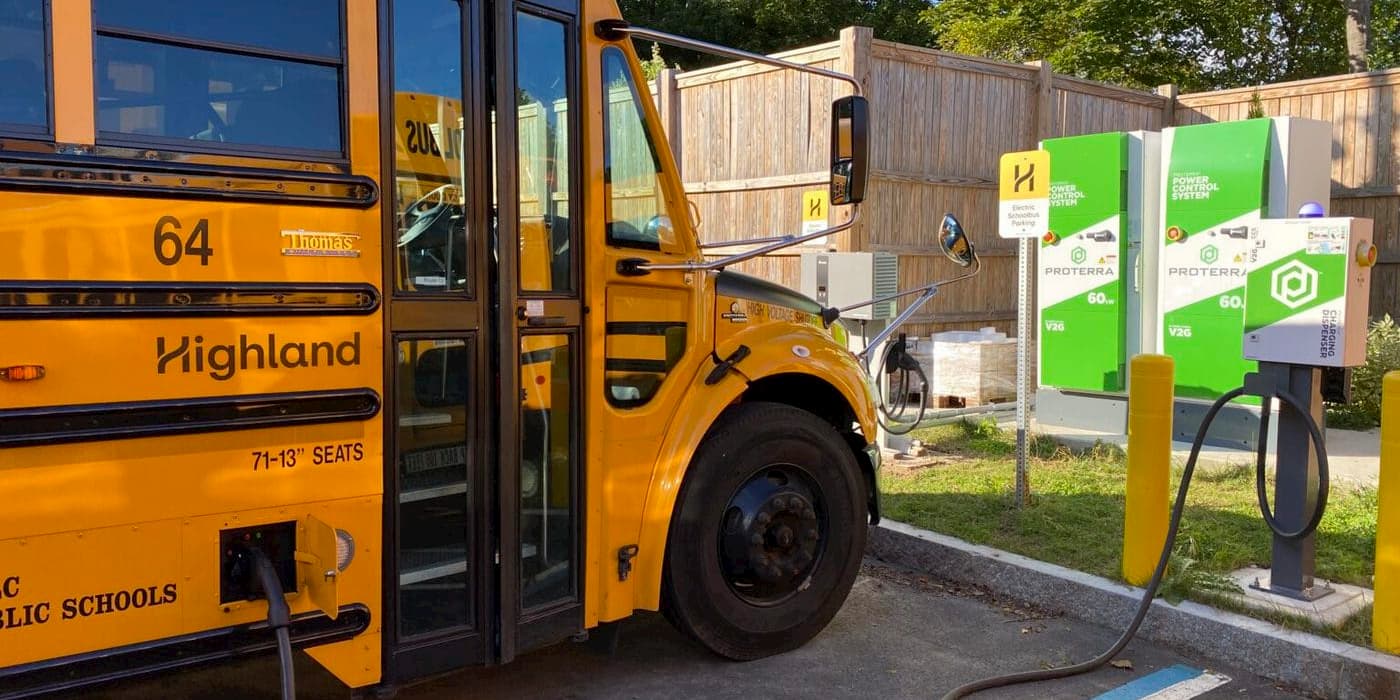
The power of heavy-duty electric vehicles is on display again in Massachusetts as electric school buses are being used to send much-needed energy back to the grid.
Several places are seeing spikes in energy use nationwide with hot summer weather. The city of Beverly, Massachusetts, a suburb of Boston, has another plan to beat the heat.
The city is using its electric school buses to send energy back to the grid to help conserve and reduce emissions. Highland Electric Fleet partnered with several leaders such as Thomas Built Buses, Proterra, Rhombus, and Synop to make the idea a reality.
Founded in 2018, Highland Electric Fleets provides electrification-as-a-service for state and US government fleets. In other words, Highland’s subscription service includes everything needed to get electric buses up and running. The company supplies the buses, charging infrastructure, and training materials to get started.
The EV bus company claims its “responsible for the largest electric school bus deployment in the United States.” Highland is currently in 30 US states and Canada, with over 330 electric buses.
The EV bus maker is helping jump-start the heavy-duty EV movement with its services. More importantly, Highland is utilizing its vehicle-to-grid (V2G) technology to send energy back to the grid.
It was the first to use V2G in Massachusetts and Vermont. In 2021, Highland worked with the same partners to send about three MWh of energy back to the grid.
This is the second summer Highland and its partners utilized electric school buses to send energy back to the grid in Massachusetts.

The potential of sending energy back to the grid with electric school buses
A few companies are working with V2G tech to help lower emissions and save the energy grid. For example, Duke Energy, one of the largest utility companies, is working with Ford F-150 Lightning owners to send energy back to the grid when not in use and, in return, save money on utility costs.
However, imagine the possibility of using an entire school bus fleet that sits idle for most of the day anyways. That’s what Highland and its partners are working on.
The partners used two Thomas Built Buses Saf-T-Liner C2 Jouley EV buses powered by Proterra battery systems. The two electric buses supplied over seven MWh of energy back to the grid.
Highland’s director of technology and platform management talks about the significant potential this technology can bring, saying:
Electric school buses are ideal assets for V2G applications. Nearly 500,000 school buses in North America spend most of their time parked. Fossil fuel-powered buses provide no value when idle. Electric buses, on the other hand, can be used effectively as mobile batteries when not transporting students to provide additional power that supports grid stability and resiliency.
Though 10 MWh may not seem significant, consider this. It takes around 17 kWh to power an average home in Massachusetts. So, the 10 MWh generated from the buses is enough to power about 600 homes.
Electrek’s Take
When I first learned of V2G technology being deployed to send energy back to the grid, I thought this would be a perfect use for electric school buses.
School buses sit idle most of the day, so why not send energy back to the grid to conserve when it’s needed most? Highland Electric Fleets is working with industry leaders to make this a reality.
As more EV buses roll out to school districts, it will open up significant opportunities to save energy costs and cut down emissions — a win-win.
FTC: We use income earning auto affiliate links. More.

Comments